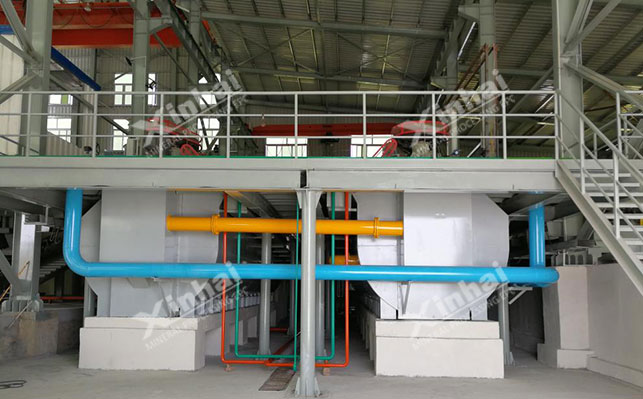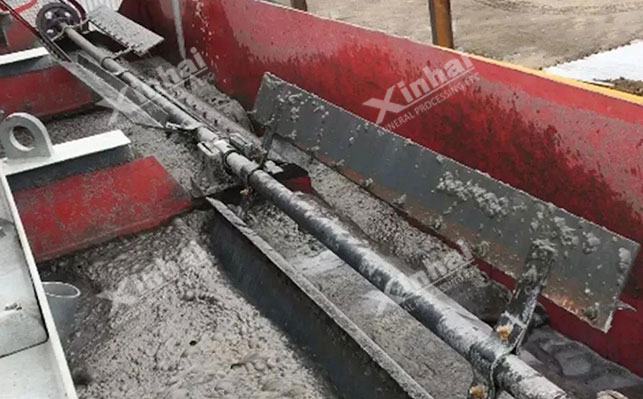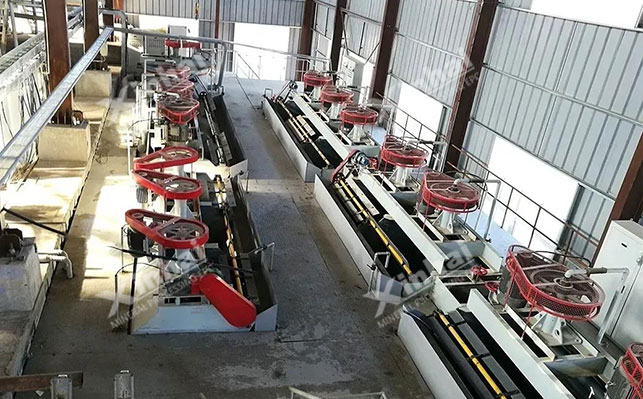
15311826613
Click to add WeChatFine-grained lead-zinc ore is one of the important resources for obtaining lead and zinc. However, due to its fine particle size, it is more difficult to be processed in mineral processing technology. This is mainly because the fine-grained mineral content of lead-zinc ore is small and dissolved in the slurry. There are many "inevitable ions" in the mineral. If you want to improve this problem, you need to improve the technology, improve the dispersion of minerals and select high-efficiency agents. So how to choose fine-grained lead-zinc ore? The following ore processing methods can effectively solve the problem!
This flotation method uses a collector to produce a certain selective flocculation of mineral particles. Butyl xanthate, Amyl xanthate and Octyl xanthate are often used to make -5μm galena form hydrophobic polymers. Cluster, but the hydrophobic clusters formed have uneven sizes and poor stability, and the flocculation effect becomes worse if the particles are too fine. However, adding non-polar oil can help overcome this shortcoming and strengthen the hydrophobic flocculation effect. The fine-grained gangue minerals and slime in the slurry are dispersed through high-efficiency dispersants and pH adjusters, and the fine-grained lead-zinc ore is selectively hydrophobically agglomerated using xanthate collectors and non-polar oil. Under appropriate circumstances, hydrophobic agglomerates with larger apparent particle sizes and certain mechanical strength are formed, thereby improving the floatability of fine-grained lead and zinc minerals. Floc flotation usually must meet conditions such as surface hydrophobization of mineral particles and mechanical stirring intensity that can overcome the inter-particle interaction barrier, and most of them require the addition of non-polar oil.

This flotation The method is to make use of the differences in the physical and chemical properties and thermodynamic properties of the surface of useful minerals and gangue minerals, add ionic inorganic or organic polymers to keep the slurry in a stable and dispersed state, and use inorganic salts or surfactants to eliminate the effects of soluble salts and slime. Pollution of mineral surface activity (mainly eliminates Ca2+, Mg2+, Fe3+ ions and hydrophilic films in the pulp), enhancement Based on the selective adsorption capacity of the mineral surface, a mixture of emulsified xanthate and non-polar oil is added to make the target mineral selectively hydrophobic, thereby obtaining active hydrophobic agglomerates, and then mechanical activation is introduced in a specific mixing tank or high-speed mixer. It can overcome the interaction barrier between particles and strengthen the formation of hydrophobic agglomerates, and then use conventional flotation to separate the hydrophobic agglomerates from dispersed gangue minerals.

Carrier Flotation is to use a coarse-grained auxiliary material to act as a carrier in the flotation process under conventional flotation process conditions. By adding an appropriate amount of collector, the fine mineral particles and the carrier are fully hydrophobic at the same time. The hydrophobic fine particles are used to have The trend towards the attachment of hydrophobic coarse particles allows the fine particles to selectively cover the carrier, or the principle of hydrophobic agglomeration is used to make the particles adhere to the surface of easily floatable coarse mineral particles, and then the carrier is floated out together with the fine mineral particles using bubbles.

The carrier can be the same mineral as the target mineral or a heterogeneous mineral, using the coarse-grained effect of the mineral particles in the flotation system and the carrier By controlling the particle size range and proportion of the carrier, flotation recovery of fine-grained minerals can be achieved without affecting the floatability of the carrier itself.
The above are several flotation methods that can effectively separate fine lead-zinc ore. In actual mineral processing plants , For the separation of fine-grained lead-zinc ores, mineral processing tests should be conducted first, and through test analysis, the appropriate mineral processing process can be determined to obtain the ideal return on investment.